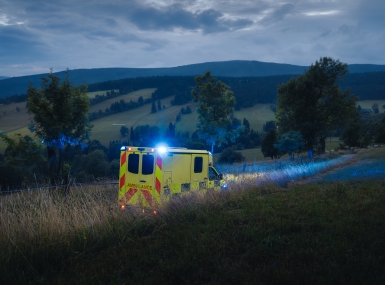Rural counties miss all shots they don’t take for substance abuse help
Key Takeaways
For smaller counties that may not have the staff or resources to compile exhaustive applications for funding to help with substance use disorders, telling a good story may be enough.
For that matter, sometimes grants are the wrong tool. But however counties go about it, they shouldn’t let ‘perfect’ become the enemy of good while taking their shots for resources that will help their residents.
“On the grant writing side, I think that people think they need to have more than they need to have,” Michelle Kunkel told the Rural Action Caucus on Sunday. “It could be as simple as doing a snapshot survey in your jail, or your probation agency, or at your treatment facility to get a little bit of demographics and get a little bit of information,” said Kunkel, executive director for the Rural Justice Collaborative. “Sometimes that’s the only story you need to tell.”
Learn more
“Describe your community, describe the distance to services, tell me about what you have, what you’ve done well and what you are struggling with in the best way you possibly can.”
Michelle White, senior policy advisor at the U.S. Department of Justice’s Bureau of Justice Assistance, said the abatement funds that are available as a result of various opioid settlements are prompting counties to plan where that money should take their communities.
“This money is really forcing people to sit down and be planful, and to think deep into the future about what their needs are and how to address them and how to align with funds,” she said.
Some of the most important work, White said, is for county officials to understand the human toll of substance use disorder.
“If you have not taken the time to talk to folks with lived experience… I would really challenge you to talk with those families, those people in the communities, the people who are trying to help the people in the communities, to really understand what their needs are,” she said. “…Families who have lost someone, people who are in recovery or trying very hard to get there, and also people who have lived experience in the criminal justice system.”
With all of that money, both from abatement funds and grants, White said counties should know what they’re getting into, in terms of reporting requirements, and involvement from funders.
“Find somebody who is really good at herding cats — really, good at it — and really good at following instructions, because grant writing is really all about reading the thing and responding to it and knowing who to ask, who actually has the expertise to design the project,” she said.
Kunkel said that although a lot of grants are certainly within the reach of most counties — and many counties need only adapt previously successful applications to win one in the next round, technical assistance may be just as effective.
“Sometimes, what you really need is someone to help you come in and figure out a strategy, figure out a plan,” she said. “Sometimes you just need a temporary cat herder.”
Attachments
Related News

CMS announces Rural Health Transformation Program funding
On December 29, the Centers for Medicare & Medicaid Services (CMS) announced $50 billion in awards over 5 years to all 50 states under the Rural Health Transformation Program.

Senators introduce bipartisan UPGRADE Act to support small and rural public water systems
On December 15, Sens. Lisa Blunt Rochester (D-Del.) and Roger Wicker (R-Miss.) introduced the Unincorporated Partnerships for Grant Resources, Assistance, and Drinking Water Enhancements (UPGRADE) Act (S. 3465), a bipartisan bill that would strengthen federal support for small public water systems and helps unincorporated communities access clean and affordable water.

House reintroduces bipartisan legislation to level playing field for rural communities
House reintroduced the Rural Partnership and Prosperity Act, bipartisan legislation intended to advance economic development in rural counties and overcome barriers to obtaining federal funding and resources.
